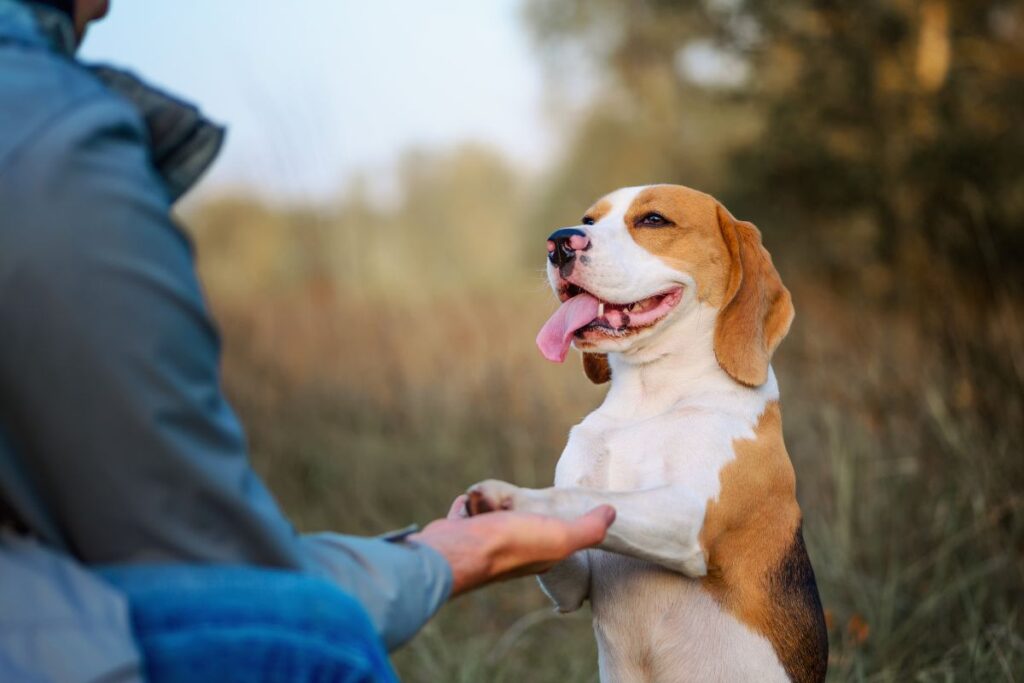Bringing a new puppy home is incredibly exciting, but we know the thought of training can sometimes feel overwhelming amidst the fun. If you’re wondering about the best approach to train your puppy, forget outdated methods relying on force or intimidation.
Positive reinforcement training (+R) stands out as the kindest, most effective method, widely recommended by veterinary behaviorists and certified professional dog trainers. Let’s explore why this science-backed method works wonders and how you can confidently start using its power today.

Why Positive Reinforcement Reigns Supreme When You Train Your Puppy
So, what makes positive reinforcement so effective and the preferred method for professionals? It focuses scientifically on rewarding the behaviors you want to see more of. When your puppy performs a desired action — like sitting politely or coming when called — you immediately add something they value (a reward).
This simple exchange does several powerful things, aligning with principles supported by leading organizations like the American Veterinary Society of Animal Behavior (AVSAB):
- Builds Trust & Strong Bonds: It strengthens your relationship through positive interactions, fostering cooperation instead of fear — essential when you train your puppy.
- Motivates Eager Learning: Puppies become active, enthusiastic participants, trying to figure out what actions earn rewards. Learning becomes a fun, engaging puzzle!
- Creates Clarity & Confidence: It clearly shows your puppy what you want them to do when you train your puppy, building their confidence as they succeed, rather than just confusing or scaring them about what not to do.
- Avoids Negative Side Effects: Unlike punishment-based methods, +R doesn’t risk creating the anxiety, fear, or potential aggression that experienced trainers often see as fallout from harsher techniques. It prioritizes your puppy’s emotional well-being.
Getting Started: Positive Reinforcement for Your Puppy Training
Ready to train your puppy using this positive power? Starting is simpler than you might think, even if you’re a first-time puppy owner:
- Find Your Puppy’s Paycheck: What does your unique pup genuinely love? It might take some experimenting! Powerful rewards can include tiny, high-value treats; think pea-sized pieces of plain cooked chicken, cheese, or soft training treats. Enthusiastic verbal praise, like “Yes! Good girl!”, is also very effective. Additionally, a quick game of tug or a favorite ear scratch can be highly motivating rewards when you train your puppy.
- Timing is Everything: Reward immediately — within 1-2 seconds — the moment your puppy offers the behavior you like. Puppies learn through immediate association; if you reward too late, they won’t connect the reward to the correct action. This precision comes with a little practice!
- Keep it Short, Fun & Frequent: Puppies have short attention spans. Keep dedicated sessions brief when you train your puppy (just 2-5 minutes is often plenty) and frequent throughout the day. Always aim to end on a successful, happy note — training should always feel like a good experience for them.
- Start Simple: Begin with easy behaviors like rewarding your puppy for responding to their name, offering a “sit,” or capturing calm behavior. Success builds momentum for both of you.
Building a Foundation of Trust Through Training
Positive reinforcement training is more than just teaching commands; it’s the most effective and kind way to train your puppy and build a lifelong foundation of trust, communication, and joy. Be patient — learning takes time. Stay consistent — everyone in the household should ideally use the same positive methods. Celebrate the small successes along the way!
While +R is powerful for everyday training, if you encounter significant behavior challenges (like fear, anxiety, or aggression), consulting a certified professional dog trainer (like a CPDT-KA) or a veterinary behaviorist (DACVB) is always recommended. By embracing positive reinforcement as you train your puppy, you’re choosing a path that nurtures a confident, happy, and well-behaved companion.

